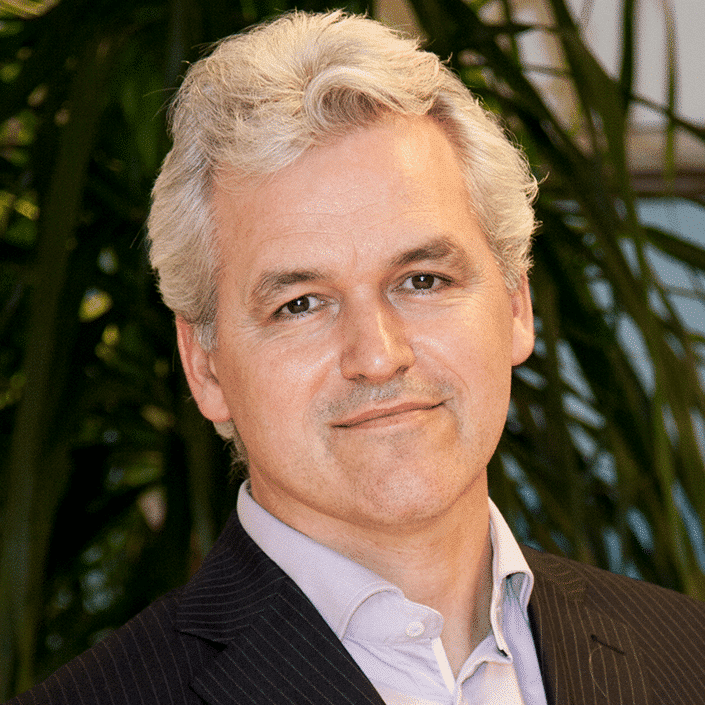We built a Whole System Model of Business to work toward high-performing systems. More recently, we focused on organizational development (OD) and change management (OCM) to find an antidote to the emotional detachment ─often addressed as alienation─ caused by Taylorism.
This most recent quest led to creating the Lifecycle of Positive Change. However, the big challenge was connecting the two frameworks while incorporating our perception of Conditional Leadership.
This is the result:
Two Complementary Models
On the left-hand side of the diagram, you’ll see a top-level schematic of RoundMap®. This perspective is what we call the whole system model of business. It contains three structural pillars:
- Progression – How well are we doing? What have we learned?
- Positioning – Where do we play, and how do we plan to win?
- Positive Core – What strengths help us succeed in the positioning game?
On the right-hand side of the diagram, you’ll find a schematic of the Lifecycle of Positive Change™. This section of ROUNDMAP consists of three stages:
- Change Onward™ – What performs?
- Change Inward™ – What gives life?
- Change Upward™ – What elevates?
The Lifecycle of Positive Change incorporates Appreciative Inquiry (AI) techniques, first introduced in 1987 by David Cooperrider c.s.
PS. An updated version can be seen here: Pi Cycle of Change.
What is Positive Inquiry?
Contrary to traditional deficit-based change programs that focus on what went wrong (deficiencies, failures, gaps, constraints, and problems), Positive or Appreciative Inquiry is a strength-based approach, focusing on what gives life to the organization by exploring and valuing what went right.
This approach to organizational change is consistent with Peter Drucker’s most insightful words on organizational development and change: “The task of leadership is to create an alignment of strengths in ways that make a system’s weaknesses irrelevant”.
Reasons for Change
Organizations need to be able to respond quickly as soon as conditions start to shift. Technological disruption is omnipresent, while surging inflation, geopolitical uncertainties, unreliable supply chains, an assertive workforce, and an imminent recession put further pressure on the need to change.
But where to start and what (interrelationships and interdependencies) should we consider before devising a solution?
The Lifecycle of Positive Change follows three straightforward steps, emphasizing what worked in the past and how to align our strengths in a way to meet the challenge at hand:
- Change Inward: Exploring Strengths (driven by co-intelligence),
- Change Upward: Aligning Strengths (driven by co-design),
- Change Onward: Leveraging Strengths (driven by co-creation).
Change Onward Process
After involving the whole system in a dialogue to explore the organization’s strengths, we coach a cross-section of the organization, a Change Design & Implementation Team, to make sense of the discovery process.
Next, the Change Design & Implementation Team designs a new alignment of the success factors to meet the challenge of elevating the organization to new heights.
Finally, we coach the teams to work together to execute a Change Action Plan to implement the new alignment of strengths into the existing operation, leading to a new future-proof organization – ready to change again when needed.
This is a representation of the entire process.
Complementary Insights
The beauty of RoundMap’s integrated approach is that new insights in one framework influence the other.
For instance,
- By asking, “What is changing?” and “What’s the best future you can imagine?” we’re collectively creating a new corporate vision.
- By asking, “What do I value most?” we’re building a shared sense of purpose.
- By asking, “What will it take to get us there?” we are strategizing toward the desired future.
- By asking, “What led me here?” and “What is my high point?” we value our mission and know what it is we don’t want to lose during the transition (consistency).
Author
-
Edwin Korver is a polymath celebrated for his mastery of systems thinking and integral philosophy, particularly in intricate business transformations. His company, CROSS-SILO, embodies his unwavering belief in the interdependence of stakeholders and the pivotal role of value creation in fostering growth, complemented by the power of storytelling to convey that value. Edwin pioneered the RoundMap®, an all-encompassing business framework. He envisions a future where business harmonizes profit with compassion, common sense, and EQuitability, a vision he explores further in his forthcoming book, "Leading from the Whole."

![Revolutionizing Business: The Power of Whole System Change 1 ROUNDMAP_Whole_System_Model_of_Business_and_Lifecycle_of_Positive_Change_Copyright_Protected_2022[1]](https://roundmap.com/wp-content/uploads/ROUNDMAP_Whole_System_Model_of_Business_and_Lifecycle_of_Positive_Change_Copyright_Protected_20221-1536x614.png)
